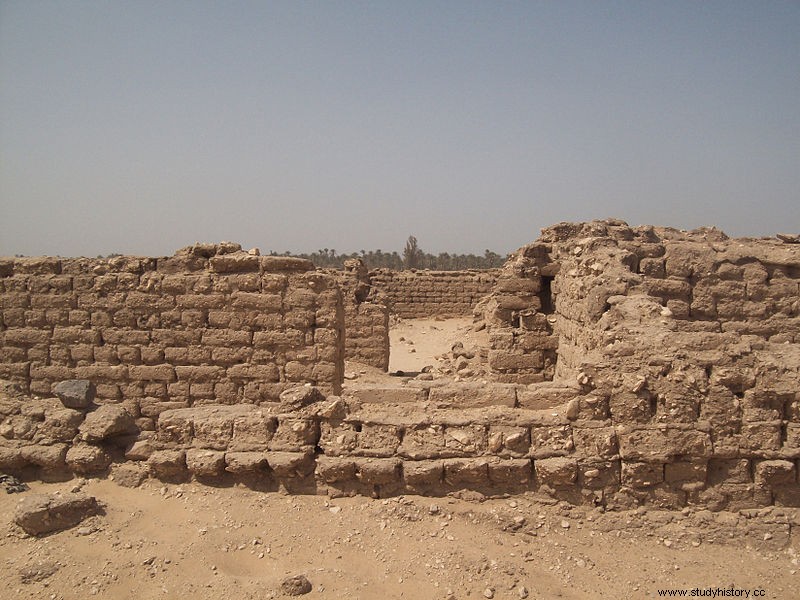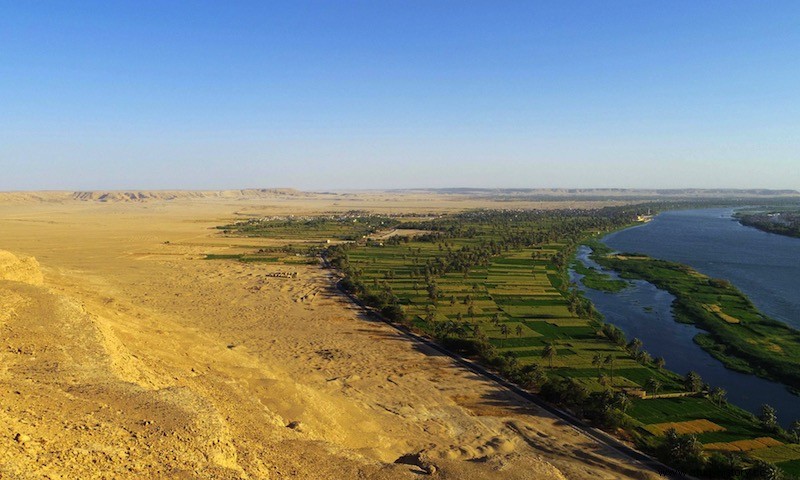Amarna (Tell el-Amarna) was the city that the Egyptian pharaoh Akhenaten ordered to be built to make it his new capital, center of the cult of the new and heretical god Aton, in the middle of the 14th century BC.
It was located halfway between the other two great cities of the time, Thebes and Memphis, but only 15 years after its foundation, with the death of Akhenaten in 1332 BC, it would be abandoned and reduced to ruins under the reign of Tutankhamun, who would restore the ancient Egyptian religion.
Between 2006 and 2013 the archaeological excavations carried out on the site focused on the cemeteries where the workers who participated in the construction of the city are buried. In the first place, the southern cemetery was investigated, which provided the expected data in terms of distribution by sex and age. A fairly even mix of adult men and women and high infant mortality, of children under seven.
But in 2015 excavations began in the north cemetery, another series of tombs, this time much simpler and poorer than the previous ones, as reported by Mary Shepperson in The Guardian, who participated in both archaeological campaigns. What they found here surprised the researchers, leaving a disturbing question in the air.

Because most of the skeletons they recovered there, many of them piled up in mass graves, with no trace of ceremonial objects or belongings, were of very young individuals.
Analysis of the 105 skeletons found in the North Cemetery was recently completed by Dr. Gretchen Dabbs of Southern Illinois University, confirming the archaeologists' suspicions. That more than 90 percent of the skeletons correspond to individuals between 7 and 25 years of age at the time of their death, most of them under 15 years of age.
The age of 7 to 25 years was in Antiquity the usual period in which fewer deaths occurred, once childhood was over, health was strengthened and declined again after that age. However the people buried there seemed to have died exclusively during that age range. In addition, children under 7 years of age, whose presence in necropolises is normally abundant, did not appear anywhere. That is, the tombs in the North Cemetery show a completely opposite pattern to the demographics of the period.

The pathologies shown by the skeletons also offered a curious range of traumas and degenerative conditions uncommon at these ages, such as up to 10 percent showing that they had developed osteoarthritis. Sixteen percent of those under the age of 15 had suffered spinal fractures and other injuries normally associated with heavy lifting.
The explanation found by archaeologists is that these people constituted a child and adolescent labor force forced to do heavy work. The absence of adult skeletons can mean two things, either when they reached maturity they were relieved by younger workers, or they never reached that age.
The fact that they were found in mass graves and with practically no funerary goods would indicate that the bodies were never returned to their families, who would surely have taken care of giving them a more dignified burial, according to their beliefs. They were buried en masse, as they died in the quarries where they worked extracting stone for the new constructions of Amarna.

Now the researchers want to go further, and try to determine if the children came from Egyptian families, as a tribute for the rise of the new city, or were children of slaves, and therefore replaceable and disposable labor.
Another option being considered is that they are populations deported from distant places, which would explain the lack of family contact. However, from the few objects found in situ, such as pottery shards, it cannot be deduced that they were not Egyptian. Future DNA analysis will shed light on this question.
However, what archaeologists are clear about is that the evidence found in the northern cemetery establishes the possibility that Akhenaten built his great city, in part, with child labor. This would also explain how quickly he got up.
Does that mean that children were employed in the construction of other Egyptian monuments at different times? According to the researchers, the data are too scarce to be able to establish comparisons. But perhaps now we will see the great Egyptian monuments with different eyes.
